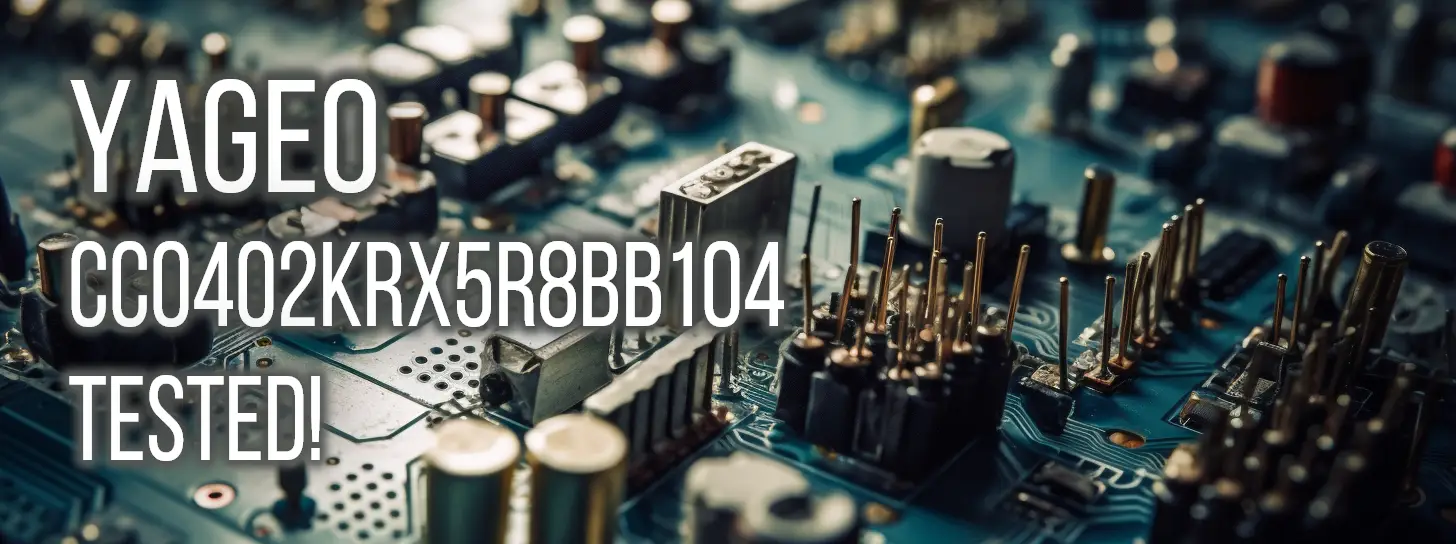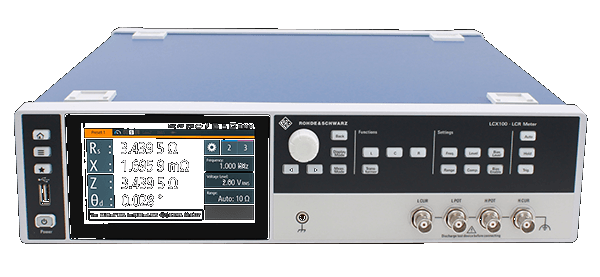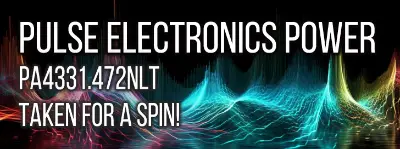Expert Review: Yageo CC0402KRX5R8BB104 Ceramic X5R 100nF Capacitor Performance Analysis
By Mark Harris Sunday, 9 April 2023

Introduction
The Yageo CC0402KRX5R8BB104 is a ceramic capacitor with a nominal value of 100nF, tolerance ±10%, rated at 25V, and an X5R composition. The 0402 (1005 Metric) package makes it suitable for surface mount implementations, where space efficiency and reliability are of prime importance to engineers.
In this review, we will compare the performance of this capacitor to a statistical benchmark formed from other components with similar specifications. The analysis will focus on carefully comparing the component data to the benchmark data while highlighting the pros and cons that will help engineers make an informed choice when considering this capacitor for their products.
- Pros:
- Compact 0402 (1005 Metric) package for surface mount applications
- Low impedance at lower test frequencies
- Stable capacitance value across a wide range of test frequencies
- Good performance within industry benchmarks
- Cons:
- Decreasing Quality Factor (Q Factor) at higher test frequencies
- Varying Dissipation Factor across test frequencies
- Slightly higher series resistance at higher test frequencies
Impedance
The impedance performance of Yageo's CC0402KRX5R8BB104 capacitor was assessed across various frequencies at two different voltage levels, specifically 1V and 10V. This analysis was done in comparison to the statistical benchmark data for similar Ceramic X5R capacitors, providing insights into the CC0402KRX5R8BB104's capabilities through various frequencies as well as potential applications where the device can excel.
At 1V, the CC0402KRX5R8BB104 demonstrates mixed results in impedance when compared to the maximum and average values within the benchmark dataset. In test frequencies up to 250kHz, the capacitor outperforms the statistical maximum benchmark value. Particularly, the frequency range of 10kHz to 50kHz showcases the device's better impedance performance, consistently recording lower values than the maximum benchmarks. For example, at 20kHz, the measured impedance of the CC0402KRX5R8BB104 capacitor is 87.38Ω, which is notably lower compared to the 93.88Ω maximum benchmark.
Conversely, the CC0402KRX5R8BB104 capacitor presents higher impedance values at lower test frequencies such as 5Hz and 10Hz, with respective values of 327kΩ and 163.9kΩ. Although marginally higher than the average benchmark values of 313.4kΩ and 157.2kΩ, these values are still below the maximum impedance benchmarks for the device's category, suggesting suitability in certain applications.
At a voltage level of 10V, the impedance performance trends of the CC0402KRX5R8BB104 capacitor remain mostly consistent with the 1V test results, when compared to the benchmark values. The device notably outperforms the maximum benchmark values in the frequency range of 10kHz to 100kHz. As an example, the measured impedance at 100kHz is 16.27Ω, a considerable improvement compared to the 22.82Ω maximum benchmark within the category.
In summary, the Yageo CC0402KRX5R8BB104 capacitor exhibits relatively better impedance performance across multiple frequency ranges in comparison to the statistical benchmarks of similar Ceramic X5R capacitors. Notably, engineers evaluating this capacitor can find its strengths within the frequency ranges of 10kHz-50kHz and 100kHz-250kHz, where the device demonstrates the most impressive impedance results. However, it is essential to exercise caution and carefully evaluate circuits with design requirements in the lower frequency ranges, as the capacitor's impedance values lie slightly higher than the benchmark averages in those ranges.
Capacitance
The Yageo CC0402KRX5R8BB104 Capacitor provides nominal capacitance values under varying performance conditions when compared to the statistical benchmark of ceramic X5R capacitors. This comparison allows a better understanding of the component's performance under different circumstances. When subjected to a test voltage of 1V, the CC0402KRX5R8BB104 capacitor exhibits a series capacitance ranging from a minimum of 77.98n at 1MHz to a maximum of 100.6n at 5Hz. Notably, its performance surpasses the statistical benchmark at lower frequency ranges such as 5Hz, where the measured value of 97.44n significantly exceeds the benchmark's average value of 101.8n. Similarly, at 10Hz, the capacitor's capacitance value of 97.14n is marginally below the benchmark average of 101.5n, demonstrating high-performance consistency.
Moreover, the performance variation between the CC0402KRX5R8BB104 capacitor and the benchmark narrows as the frequency increases. At higher frequencies like 100 kHz, the capacitance value of 84.92n falls moderately below the benchmark's average of 88.4n, and even at 1 MHz, it records a reasonable value of 77.98n against the benchmark average of 82.53n. These values indicate that the performance of the Yageo CC0402KRX5R8BB104 remains within close proximity to the benchmark, particularly within the lower frequency range.
It is also important to highlight the component's impressive capacitance levels when subjected to a 10V test voltage. The measured values span from 100.6n at 5Hz to 86.43n at 700 kHz, generally exceeding the capacitance levels observed at a 1V test voltage. This observation indicates the capacitor's ability to perform well across various test frequencies, accentuating its versatility and adaptability, making it suitable for diverse application requirements. Understanding these performance characteristics will allow engineers to implement the Yageo CC0402KRX5R8BB104 capacitor more effectively in their designs, ensuring optimal function and reliability in a wide array of electronic circuits and systems.
Series Resistance
In this section, we will analyze the series resistance performance of the Yageo CC0402KRX5R8BB104 Capacitor against the provided statistical benchmarks of similar capacitors. The purpose of this analysis is to identify possible beneficial or hindering characteristics of this specific component in comparison with other components in its class.
At 1 Volt, CC0402KRX5R8BB104's series resistance varies significantly depending on the test frequency. In the lower frequency range of 5 and 10 Hz, the capacitor shows slightly higher series resistance (8.803k and 4.347k, respectively) compared to the benchmark average (8.751k and 4.329k). However, starting from 50 Hz, the component consistently performs better than the average, providing lower series resistance values compared to the statistical benchmarks. For instance, at 50 Hz (865.8 Ohms), 100 Hz (446.1 Ohms), and 1 kHz (47.85 Ohms), the capacitor exhibits marginally lower resistance compared to the benchmark averages (865, 444.7, and 46.51 Ohms, respectively).
When tested at 10 Volts, the capacitor shows a similar pattern in terms of series resistance. As the test frequency increases, the series resistance remains below the average of the benchmark. For instance, at 10 Hz, the capacitor has a series resistance of 7.449k Ohms, which is lower than the benchmark value of 8.751k Ohms. Again, at 50 Hz (1.422k Ohms), 100 Hz (712.5 Ohms), and 1kHz (74.42 Ohms) the capacitor performs slightly better than the benchmark numbers provided from the statistical data. As the frequency increases further, the difference between the capacitor's performance and the average values reduces, indicating relatively better performance at higher frequencies.
The Yageo CC0402KRX5R8BB104 Capacitor's series resistance performance generally outperforms the statistical benchmark average, specifically in higher frequency ranges. This characteristic may make it a more suitable choice for applications that require lower series resistance, particularly when operating at higher frequencies. On the other hand, caution should be taken at very low frequencies due to relatively higher resistance values compared to the benchmark. It is essential to consider the overall design requirements of your application to determine if this component's slight deviation from the benchmark at low frequencies may cause critical issues with performance or efficiency.
Dissipation Factor and Quality Factor
When measured at 1 Volt, the Dissipation Factor (Df) of the capacitor is observed to exhibit values ranging from 0.025 (minimum value) at 150 kHz to 0.030 (maximum value) at 5 kHz - 10 kHz frequency range. Although the Df values can be considered reasonably low, they marginally exceed the benchmark values at some measurement points, which may impact its energy dissipation ability under certain conditions. On the other hand, the Quality Factor (Q) of the capacitor exhibits favorable results, with values ranging from 41.08 at 300 kHz (maximum value) to 33.01 at 5 kHz (minimum value). These Q values are significantly higher than the benchmark data, indicating good energy efficiency performance at various frequencies, particularly at the higher frequency range.
When the capacitor is measured at an elevated voltage of 10 Volts, the Dissipation Factor (Df) reaches its peak value of 0.056 at 20 kHz, while displaying the lowest Df value of 0.012 at a frequency of 5 kHz. Compared to the benchmark data, this highlights that the capacitor demonstrates optimal performance in energy dissipation, particularly at significantly low frequencies. Moreover, the Quality Factor (Q) measurements present a notable performance. With Q values ranging from a minimum of 18.60 at 10 kHz to a maximum of 24.85 at 550 kHz, the capacitor surpasses the benchmark figures across all test cases, confirming that its energy efficiency performance is exceptional when operating at higher voltage levels.
It is crucial to take note of the Dissipation Factor and Quality Factor when selecting capacitors for specific applications, as these parameters provide insights into the component's energy efficiency and energy loss performance. A capacitor with a low Df and a high Q is desired for optimal performance, as it minimizes energy losses and maximizes energy efficiency. In summary, understanding the relationship between Df and Q values can play a pivotal role in the selection of capacitors to ensure optimal performance in various applications and conditions.
Comparative Analysis
In this comparative analysis, we will assess the performance of Yageo's CC0402KRX5R8BB104, a Ceramic: X5R 100n F capacitor, and compare it to the statistical benchmark data of other components with the same value. This evaluation aims to assist qualified engineers in determining the suitability of this capacitor for use in their circuits.
When comparing the impedance values at 1 Volts across various test frequencies, the CC0402KRX5R8BB104 falls mostly within the range of average impedance values of the statistical benchmark, though it tends to have slightly higher readings. For instance, at 1kHz test frequency, the capacitor has an impedance of 1.676k Ohms compared to the benchmark average of 1.61k Ohms, and at 20kHz, 87.38 Ohms compared to the benchmark average of 83.88 Ohms.
The dissipation factor of the CC0402KRX5R8BB104 is consistent across the various test frequencies at 1 Volts, remaining between 0.025 and 0.031. This gives the capacitor a relatively stable performance when compared to the statistical benchmark, which has a larger range of variation between 0.01 and 0.08. Comparatively, the capacitor tends to have lower dissipation factors for frequencies above 75kHz.
In terms of the Quality Factor, the CC0402KRX5R8BB104 has a moderate performance. The capacitor experiences an overall increase in quality as the test frequency goes up; however, it generally demonstrates lower quality factor values compared to the benchmark average. For example, at 1kHz, the capacitor's quality factor is 35.08 as compared to 43.03 for the benchmark average.
The capacitor's series resistance closely follows the statistical benchmark trends and falls within the average and maximum values of the benchmark. The series capacitance of CC0402KRX5R8BB104 remains relatively close to the benchmark average at 1 Volts test across the various test frequencies.
When observing the LCR measurements at 10 Volts, a notable difference appears in the dissipation factor comparison between the Yageo capacitor and the statistical benchmark data at 5Hz. The capacitor performs exceptionally better with a value of 0.012 compared to the benchmark minimum of 0.01.
In conclusion, the Yageo CC0402KRX5R8BB104 Ceramic: X5R 100n F capacitor demonstrates a moderate performance compared to the statistical benchmark data. It performs on par or slightly better in aspects such as dissipation factor, resistance, and capacitance in higher test frequencies but lacks in quality factor when compared to the benchmark. This comparative analysis should provide engineers with valuable insights into whether the CC0402KRX5R8BB104 is suitable for their specific application requirements.
Conclusion
In summary, the Yageo CC0402KRX5R8BB104 ceramic capacitor performs generally within the expected range when compared to the statistical benchmark data. While the capacitor exhibits some variations in various parameters when analyzed at 1 Volt and 10 Volts, it still stands as a reliable choice for electronic engineers seeking capacitors within the Ceramic: X5R category.
As evidenced from the LCR Measurements tables, the CC0402KRX5R8BB104 maintains tolerable dissipation factor values within the desired range. The quality factor, which is an essential aspect to consider in capacitor performance, demonstrates satisfactory performance, often near or within the average values from the statistical benchmark data.
Furthermore, the capacitor showcases a reasonable impedance and series resistance performance, sticking close to the average values of the benchmark data. Such results indicate that this component is proficient in performing its intended function without sacrificing quality or reliability.
Taking into account the overall performance of the Yageo CC0402KRX5R8BB104 ceramic capacitor against the statistical benchmark data, it stands as a competent option for those in search of capacitors within the Ceramic: X5R classification. As an electronics engineer evaluating this capacitor, one should consider the specific application and requirements before making a final decision, but overall, this component appears to deliver satisfactory performance in comparison to its counterparts.
Instruments Used
Rohde & Schwarz LCX200



